Inside story: How our greatest cyclists have rebooted our greatest race
Stuart O’Grady’s team of decorated cyclists has been charged with relaunching the Tour Down Under out of Covid-19 – and it’s an especially big deal for women.
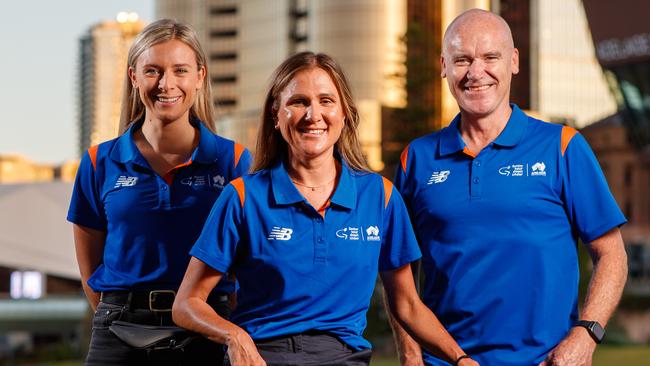
SA Weekend
Don't miss out on the headlines from SA Weekend. Followed categories will be added to My News.
Annette Edmondson was 14 or 15 and still finding her way in the world of cycling when she’d ride out with a group of mates from her southern suburbs home to watch the Tour Down Under.
On this particular occasion she was waiting on Hahndorf’s main drag for her then hero, Stuart O’Grady, to ride past.
She’d been handed a lollipop displaying O’Grady’s smiling face and was waving it wildly from the side.
“So yeah, we’re just standing there waving these on the other side of the road as Stuie, the hometown hero, went through,” she says with a laugh.
“I don’t think he saw us.”
Now, about 15 years later, she doesn’t have to peer at a lollipop to see O’Grady’s face.
It’s only a few metres across the room from her most days, as they work together with fellow South Australian cycling champion Carlee Taylor to prepare for the relaunch of the first Tour Down Under post-Covid.
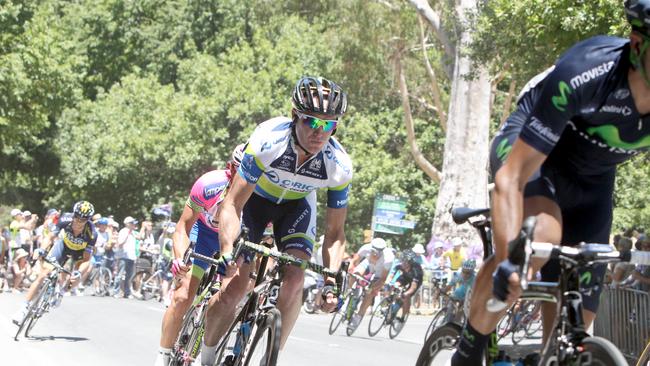
It’s a big deal for the power trio and for the state, with international teams returning after a two-year hiatus.
It’s an even bigger deal for our female riders; the women’s race will be its first UCI WorldTour stage race in the southern hemisphere.
This means a lot to Edmondson and Taylor, who have dedicated much of their adult life advocating for equality in their sport.
Now they have a chance to give the next generation of riders opportunities of which they could only have dreamt.
“It’s huge, and it’s something that everyone’s been fighting for for a long time,” Edmondson says.
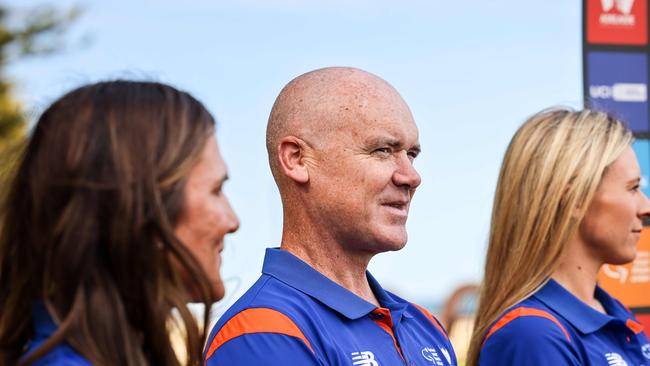
Paramedics, marshals, motorcycle pilots flown in from Europe (ours are a bit rusty due to the lack of big events) council approvals, volunteers, subcontractors, MFS, CFS, even sorting the hotel breakfast menu for more than 500 meals…
O’Grady is slowly reeling off all the things that need to be done to ensure this year’s Tour Down Under goes to plan.
We joke that it makes a Tour de France green jersey sprint seem a bit of a walk in the park (O’Grady won three).
“It certainly taught me to stay calm under pressure. Never panic,” he says wryly.
Still, it’s safe to say getting the biggest cycling event in the southern hemisphere, and SA’s biggest international event, up and running after a two-year pandemic-induced hiatus hasn’t always been the smoothest of sailing.
For starters, the major cycling teams, who traditionally use this race to get vital early season WorldTour points (particularly important now with a new promotion-relegation system implemented), were a little nervy about jumping on a plane and being turned around at customs, a la tennis champ Novak Djokovic.
So it was O’Grady’s job to play the diplomat, which included a few round trips to Europe.
“There was quite a lot of ‘Are you sure it’s going to be back on?’ ‘What’s the Covid scenario?’,” he says. “After what happened in Melbourne, all those stories get kind of get fed back to Europe and we were seen as a little fortress there for a couple of years.
“Which was a little tough because cycling throughout Europe seemed to carry on pretty much as normal.
“For me, it was just about making it clear to them they were going to be OK.”

It’s early December as O’Grady, the race director, and assistant race directors Edmondson and Taylor huddle around a table in the Tour planning HQ in the SA Water building on Victoria Square/Tarntanyangga.
They gather for a chat in a boardroom which overlooks what, in a few short weeks, will be the Tour Down Under Village, while the low hum of their team of media operators, analysts, planners, IT experts, commercial and marketing folk, can be heard outside the door.
Truth be told, at this point much of the very long to-do list has largely been ticked off.
Most of the big guns are locked in.
In a few days the reigning Giro d’Italia (Tour of Italy) winner Jai Hindley, the first winner of the Giro and only the second Australian behind Cadel Evans to win a Grand Tour, will be announced.
That’s on top of four-time Tour de France winner and seven-time Grand Tour winner Chris Froome (Kenya); previous Tour de France winner Geraint Thomas (UK); two-time TDU winner Daryl Impey (South Africa) and Tour of Spain winner Simon Yates (UK).
Then there’s the homegrown contingent of Michael Matthews, a recent World Championship bronze medal winner who last raced in the 2014 TDU; sprint king Caleb Ewan; Ben O’Connor, who came fourth in the 2021 Tour de France; and veteran Simon Clarke, who will be taking part in his 12th TDU.
“I think it’s the strongest Australian line-up we’ve ever had,” O’Grady says.
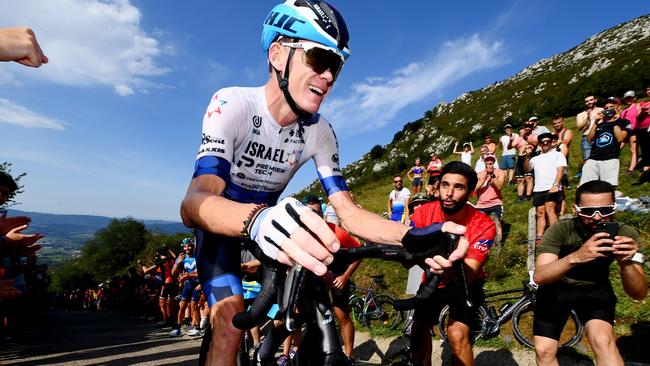
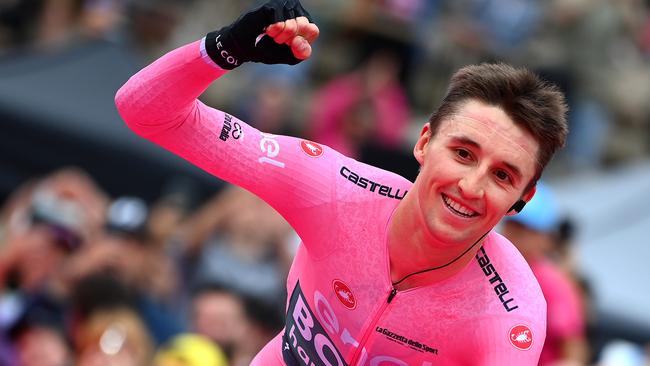
It’s the first TDU since BC (before Covid) and it’s also the first major race without the considerable presence of previous director Mike Turtur.
He and O’Grady were tight, but the latter is keen to put his own mark on things and admits he stayed up many a late night labouring over the best routes, thinking about the impact from both a cyclist’s and spectator’s point of view.
“I certainly wasn’t employed to just copy and paste what Mick had done,” he says.
“So coming up with new innovations and new start locations and finish locations; just to kind of freshen it up and just give the fans and the cyclists something a little different.”
The highlights reel includes tomorrow’s women’s opening stage along the coast, from Glenelg to Aldinga, the men’s final stage from Unley to the summit of Mount Lofty, and arguably the game changer, a historic individual time trial, the “efex Prologue”, around the River Torrens.
Once O’Grady designed the routes, he then decided to ride them … at least some of the way.
“I’m not as fit as I used to be,” he says, despite clearly having less body fat than your average AFL footballer.
Sitting back he seems pleased with the outcome, reasonably confident they’ll offer some fresh challenges and, when pressed, admits he’s already working on the next few years’ routes.
“As a rider, you have some stages which weren’t so exciting and others which you kind of came back from really buzzing,” he says.
“I want the guys to go home with a good memory of all the stages and maybe attract some different riders who mightn’t have come in the past.”
There’s a nervous energy in the room as the trio sway between being a little edgy and super pumped about what lies ahead.
No one needs to remind them what’s at stake.
Traditionally the TDU injects upwards of $65m into the state’s coffers, helps attract over 700,000 spectators and beams our state, at its summer best, out to a worldwide viewing audience estimated at around 150 million.
It’s a major race but also an important tourism drawcard coming out of the pandemic and the sort of publicity which “Ruby the Roo” could only aspire to.
But there are the inevitable questions.
Will people turn out in droves?
Are the strong crowds at the Supercars and the recent Test Match a pointer to showing Adelaideans are keen to again wrap their arms around significant events?
These are all positive signs, but no one will really know until the rubber hits the roads.
At this point, they’ll consider a similar turnout to the pre-Covid races as a pass mark.
“But we do know that Adelaide loves a freebie,” somebody offers.
There are laughs all around.
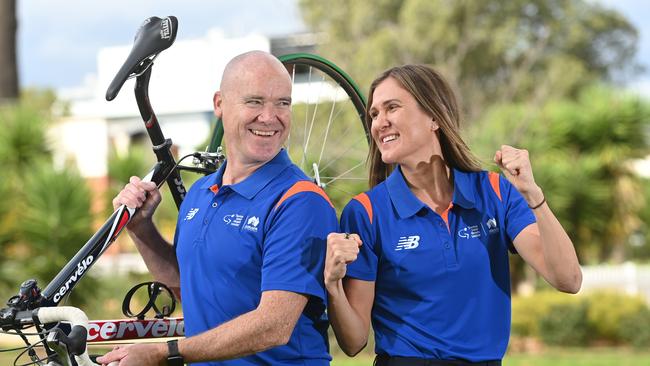
A simple flowchart changed Annette Edmondson’s life.
A school visit from the South Australian Sports Institute (SASI) found the soccer-mad
12-year-old was built to ride.
“They’d send out the sports scientists and do a whole heap of tests; how fast you can run or how high you can jump,” she recalls.
“Then the data was sent off to the labs and if you were lucky, they’d spit out which sport you’d best suit.
“Mine said cycling.”
She struggled a little at first, having revelled in the team-first environment of soccer.
But then she saw the flowchart.
“I can still remember super clearly sitting in a room during that first year at the age of 12,” she says.
“Seeing this flowchart of where we were and then if we followed these steps that we could eventually make it to the Olympics at the top of that list.
“At that point, I was super competitive, but I just was very present and focused on right there and then, and I didn’t actually look too far forward. I hadn’t really thought about the Olympics. I just did sport because I loved it.
“Whereas when I saw that I thought, ‘Wow, I could really go to the Olympics’.”

So began a journey towards that dream, with plenty of highs and lows in between.
She won national titles as a sprinter against much older (and bigger) riders, dropped out for a little citing a lack of motivation (and missing soccer) and then returned.
This time she was an endurance rider, after seeing a photo of fellow South Aussie Tiffany Cromwell training in Italy.
Cromwell was a few years older than Edmondson but a fellow student at St John’s Grammar School, in Belair.
In her, Edmondson saw an international athlete, who looked happy, was seeing the world and was part of a team.
“And I was thinking you know, that’d be so cool to travel the world and to be able to do that,” she says.
“And I thought maybe that’s the new spark and drive that I need.”
So she swapped: from sprint to endurance. And she joined a team.
Eight months later she was national Omnium (a multifaceted event which includes a road race, criterium and time trial) and Scratch Race champion.
Then, at the 2012 UCI World Championships in Melbourne she won silver in the Team Pursuit and Omnium.
This nailed her a spot in the team for the 2012 London Olympics, where she’d go on to win a Bronze medal, before turning pro.
The flowchart had been right.
She’s now hoping this year’s TDU might be a similar lightning rod for another wide-eyed kid a little unsure of the next step.
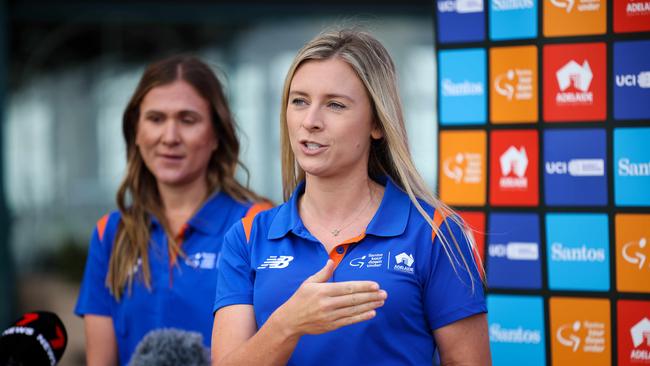
Edmondson and Taylor remain two of our most decorated and acclaimed cyclists, but even they admit they both retired with a bit of fuel left in the tank.
However, at the end of the day, it just wasn’t worth their while.
While improving, the salaries and the opportunities weren’t quite there, and hanging on would have put the close friends and former teammates behind the eight-ball, chasing other, more lucrative career opportunities (such as running an international cycling festival).
Their eyes were opened big time when they were together during the Tour de France last year and saw first-hand the level of support, largely driven by broadcast dollars, being put behind the women. It made them determined to see that repeated here.
They also look around at the strides being made in AFLW and women’s cricket and see this year’s Tour as a line-in-the-sand moment for cycling. The early signs are good.
The women’s tour will be part of the national broadcast (on Channel 7 and 7-plus) as well as broadcast internationally.
That means more eyeballs locally and globally and, with it, more sponsorship opportunities and, in turn, higher salaries and bigger events. From there they hope to see consistent growth.
The next stage will be making the women’s event a compulsory event for teams. Unlike the men’s race, where all 20 teams must provide seven-man rosters, the women are, at this stage, invitation-only for their (at last count) 13 teams.
“We’re hoping that will change in the next couple of years, as we keep improving and keep building,” Edmondson says.
There may be a slight hint of regret when they talk about the opportunities now coming through for younger riders, but that is quickly offset by knowing the strides being made.
“There is a little part of you that’s a little bit like, ‘Oh, why couldn’t this have happened to us?’,” Edmondson says.
“But that’s our motivation and to be able to be sitting on the other side helping to be part of that growth and to see athletes that we’ve worked with or met getting that opportunity – and to also see the those athletes be grateful for what they’re getting now and to have understood what we went through – that’s pretty nice and pretty special.”
One of Taylor’s fondest memories is her final TDU in 2018, when she had made the decision to retire from the world tour.
“The whole peloton let me go up the road for some laps,” she says.
“Being able to finish my career in front of my friends and family and sponsors like that will be something I’ll never forget.”
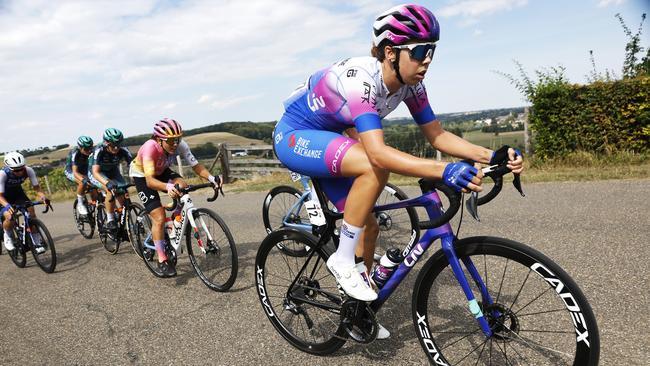
It gives her chills to think such scenes could now be beamed out to a global audience.
Names such as local girl, world champion, Olympian and Commonwealth Games gold medallist Alex Manly; fellow Olympian Georgia Baker (who is a world champion and three time 2022 Commonwealth Games champion); 2022 Santos Festival of Cycling winner Ruby Roseman-Gannon; and SA rookie professional Amber Pate, who are all members of the all-Australian Jayco-Alula cycling team, will get the type of exposure that, only a few short years ago, seemed almost laughably remote.
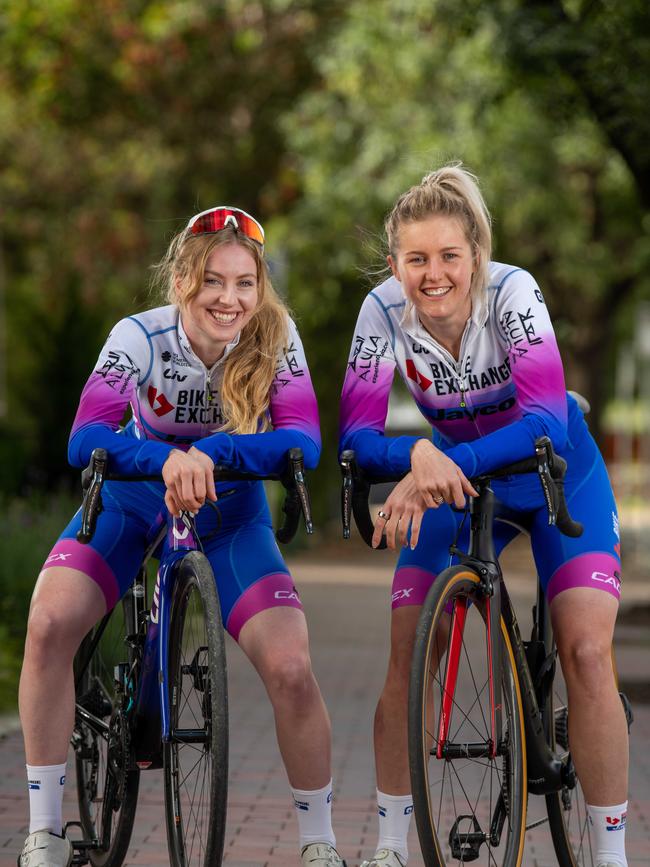
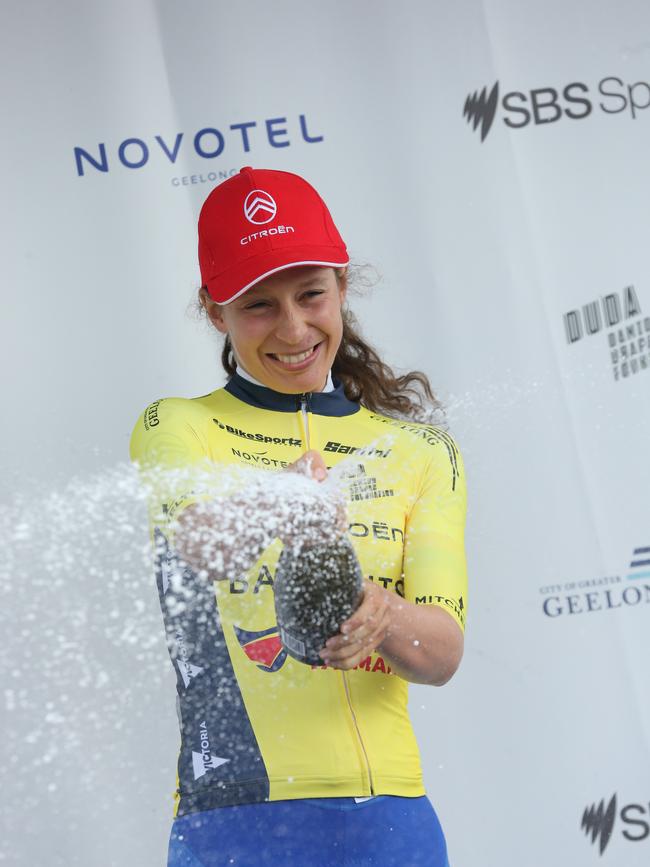
“I think it was 2017 or 2018,” Edmondson recalls. “I was down there for the team presentation and it was the first year that they’d done the men’s and the women’s presentation at the same time.
“Someone came up to me with their daughter. They said that they didn’t know that there was a women’s race.
“They said that having us at the same time on the stage made him think, all of a sudden, ‘Oh, there’s an opportunity for my child to get into cycling and do this’.
“So if that was the impact of the presentation, then having the women and the men together on the same level of racing for the entire week; it’s going to be huge.
“It’s going to be so exciting.”
It also helps that these images, and those of a (hopefully) sunstruck South Australia, will be beaming into European homes in the depths of winter, amid a dearth of other international road cycling events.
“I think it’s going to help the development and the depth of Australian cycling in the women’s peloton,” Taylor says
“When I was younger, I was lucky enough that my family were involved in the sport and that provided a lot of support and helped me on my pathway.
“But that’s not always the case for everyone. So I think it’s going to help just get women’s cycling more on the map.
“Kids might be watching the TV and seeing it now on live to air and be like, ‘Well, this actually is super cool, I want to go out and ride my bike like them’.
“That’s what we’re hoping will happen and then you get a lot more people coming up through the sport.”
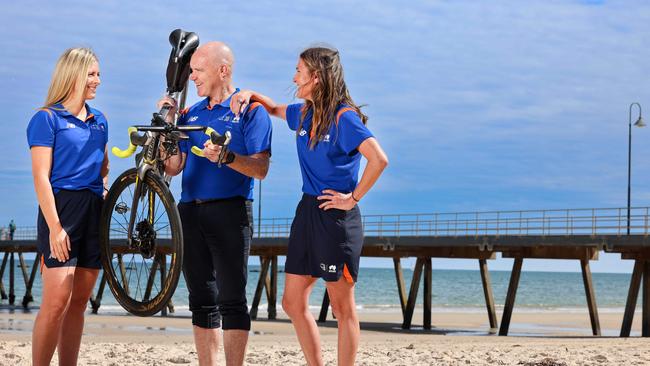
The chat is coming to a close and O’Grady, Edmondson and Taylor are moving on to their next task.
There’s an issue to be sorted with 15km of barriers brought in for the women’s prologue, they’ve still got to nut out internet access for media teams in some of the remote locations and there’s what seems to be a never-ending stream of local government requests.
As a team, they clearly complement each other. O’Grady presides with a zen-like calm, Taylor is full of ideas and energy and Edmondson is the self-appointed “solution finder”.
O’Grady says they all come to it with different viewpoints and experiences, but the key from here is just keeping things as simple as possible.
“Obviously, it’s a lot less painful than riding a bike, so it’s a completely different kind of challenge,” he says.
“But right now, it’s just breaking things down.
“You use the same mentality as like a Tour de France, you break it down into stages and then you break it down into mountains, then you break it down into hours, and then minutes.
“And just knowing that nothing is as hard as what we’ve done physically.”
Except, just maybe, for that new route he dreamt up one night right to the top of Mount Lofty. ■




